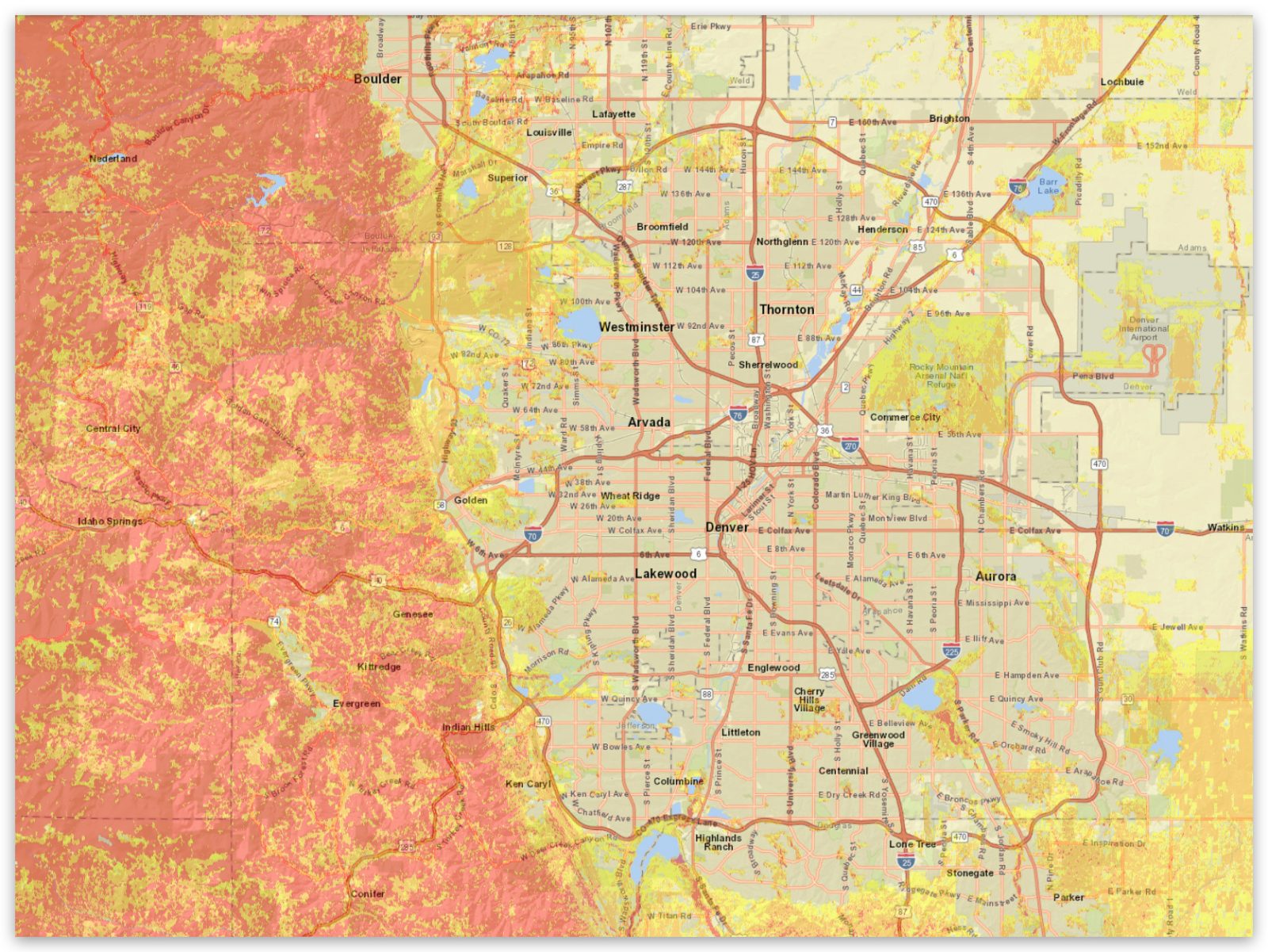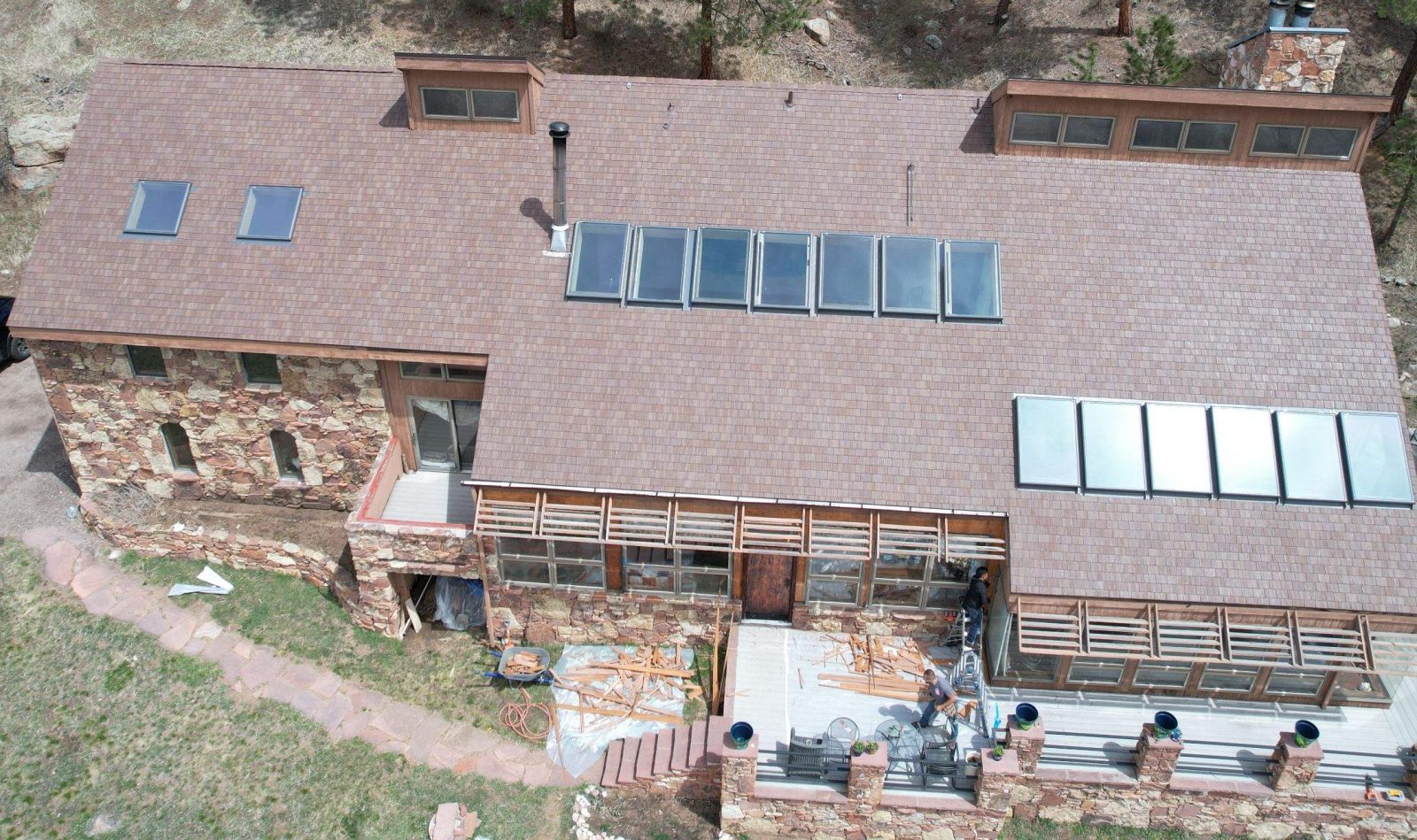What Is Home Hardening (and Why It Matters for Colorado Homeowners)
Your home wasn’t built for what’s coming.
That’s not a dig at your builder, it’s just reality.
Most Colorado properties in fire-prone areas were built when wildfires were less frequent, less intense, and honestly, less terrifying.
This post breaks down what home hardening means, why embers—not flames—pose the biggest threat, and what you can do to protect your Colorado home.
The Map: Where Risk Lives
Take a look at the map below.
That orange and red area is the Wildland Urban Interface (WUI), the zone where homes meet wildland vegetation.
It’s not just mountain cabins anymore. The WUI now includes suburban neighborhoods in Boulder, foothill communities along the Front Range, and even parts of metro Denver where development pushes against open space.
If you’re anywhere in those zones, you’re in the game whether you realize it or not.

Defensible Space vs. Home Hardening
Most homeowners know about creating defensible space by clearing trees and brush, but that’s only half the equation.
The bigger threat often comes from your home itself.
80-90% percent of wildfire home losses come from embers, not flames.
That’s where home hardening steps in.
Think of wildfire protection as a two-part system:
-
Defensible Space: Everything around your home, including cleared zones, trimmed trees, and managed vegetation that slow a fire’s approach and give firefighters room to work.
-
Home Hardening: The home itself—roof, vents, siding, windows, and deck—the structure embers will attack.
You can have perfect defensible space and still lose your home if embers find a way in through an unscreened vent or ignite your wood deck.
Both matter. But hardening determines whether your home survives when embers arrive.
And they will arrive.
Why Colorado’s WUI Is Different
You’re dealing with a perfect storm of risk factors:
-
Dense forest fuels surround most properties
-
Low humidity year-round creates tinder-dry conditions
-
High winds push fires uphill fast
-
Beetle kill left millions of dead trees standing
-
Development patterns put homes directly in fire’s path
The 2021 Marshall Fire proved fires don’t just happen “out there” anymore. They happen in subdivisions, in neighborhoods, on your street—even in places that look suburban, not mountain.
The Ember Problem
Your biggest threat isn’t the fire you see—it’s the one you don’t.
Embers can travel miles ahead of a fire front, land on dry leaves in gutters, or slip through attic vents.
Even if flames never reach your property line, one ember can do massive damage if your home isn’t built to stop it.
What “Home Hardening” Really Means
Home hardening means making your house more resistant to ignition. It’s about upgrading the structure, not just the yard.
Six key areas to focus on:
-
Roof: Class A fire-rated and Class 4 impact-resistant shingles, synthetic shingles, tile, or metal roofing
-
Siding: Fiber cement, stucco, or steel
-
Vents: Ember-resistant screens that block sparks
-
Gutter Guards: Prevent ember buildup and block debris
-
Windows: Double-pane or tempered glass to handle heat
-
Decks: Fire-resistant materials and enclosed undersides
You don’t need to tackle everything at once, but you do need a plan.
These changes drastically reduce the chance of ignition even when embers are raining down.

The Insurance Connection
Here’s the part that hits your wallet: insurers are pulling out of high-risk areas.
If you can keep coverage, premiums are climbing 30 to 50 percent each year.
Home hardening isn’t just about survival anymore—it’s about insurability.
Some carriers now offer discounts for verified hardening measures. Others require them. A few won’t insure you at all without proof.
If you’re dropped, your only option might be the Colorado FAIR Plan, a last-resort program with limited coverage, higher premiums, and minimal protection. It’s designed to keep you barely insured, not fully covered.
The real play is staying with a standard carrier by proving your home is worth the risk.
Home hardening makes that case.
Real Talk
Nobody wants to spend $20,000 to $50,000 hardening their home.
But compare that to:
-
Rebuilding costs (if you can even find a crew)
-
Years of displacement
-
Lost belongings
-
The trauma of watching your home burn
Home hardening isn’t overreacting. It’s adapting.
The fires are here. They’re not leaving.
Your home either adapts or it doesn’t make it.
The question isn’t whether to harden your home.
It’s how fast you can get it done.
Next Step
If you live in Colorado’s WUI, start with a SafeShield Home Hardening Evaluation. We’ll identify your home’s weak points and create a practical plan to protect it before the next fire season hits.
